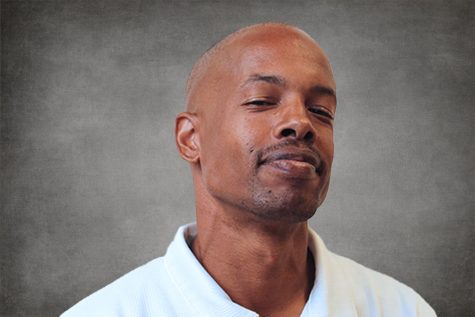Football players transfer, earn athletic scholarships
Options remain open to players chosing smaller schools
Apr 20, 2016
Every year millions of kids enter kindergarten and elementary school and inevitably some percentage of them are going to say, when they grow up they want to be a professional athlete.
With eight million high school students participating in athletics across the nation, a fraction of those, only 480,000 will have the opportunity to compete at the NCAA level.
Contra Costa College, the underdog campus in San Pablo, habitually defined by its lack of resources and characterized by its athletes with big hearts and bigger attitude, seems to always shock the doubters.
Over the past two years the Comet football program under coach Alonzo Carter has transferred 34 players into institutions of higher learning.
“We target guys that want to go D1. Whether they are or not, we’ll find that out,” Carter said. “We try to get students that for some reason didn’t get the scholarship but had their academics in order — it all starts with character.”
Football, at the community college level in particular, can be tough on transitioning players.
They usually fall into one of two categories — 1) the player that needs to develop physically to get attention from larger schools, or 2) players that may need to get their academics in order.
In either case, a proven system with a track record of success is the best place for a player that falls into either of those categories to land.
“Carter’s track record matters to me because I know what I want to do and I know people get to D1 schools from here,” Comet running back Harris Ross said. “So I just work hard and follow the examples that came before me.”
In the 2014-15 season and college year Carter took a collection of out-of-state, local and transfer students, then melded the group together to win the Living Breath Foundation Bowl.
Of that championship team, 25 players transferred to four-year colleges.
Twelve of those players transferred to Division I schools.
They are: Jonathan Banks, QB, Kansas State University; Daris Workman, OL, North Carolina State University; Takkarist Mckinnley, LB, UCLA; Marquez Mackey, DB, University of New Mexico; Deonte Reynolds, DT, Arizona State University; Alem Amores, OL, Jackson State University; James Alex Reid, DL, Jackson State University; Brandon Wright, DL, Jackson State University; Yacoub Hammoudeh, OL, Jackson State University; Theodore Spann, DB, Houston Baptist University; La’Ray Davis, OL, Texas Southern University; and Jerimah Rainey, DB, Eastern Illinois University.
For those following the revolving door that is community college athletics, losing 25 players might have signified a fall from grace for the Comets.
Coach Carter has a track record of finding NCAA Division I gems.
Over the last 10 years he has been responsible for guiding the lives of more than 50 players, high school and college, to D1 schools and one step closer to their dreams.
“I’ve known Carter since high school and I knew he’d do whatever he can for his players on and off of the field. I put my full faith in him,” Comet quarterback Cameron Burston said.
This past season in 2015, with only a handful of sophomores returning, Comet football returned to bowl action, this time losing in a rematch to Hartnell College in the Living Breath Foundation Bowl.
Following the 2015-16 season, 10 Comet players transferred to four-year schools with seven of those players moving on to Division I colleges.
Chibu Oneykwu, LB, San Diego State University; Billy Nico Hurst, DB, Youngstown State University; Ted Noble, LB, Delaware State University; Sterling Taylor, WR, Murray State University; Frank Stephens, WR, Northern Colorado University; Jaelen Collins, TE, Arkansas-Pine Bluff University; and Chima Onyekwu, DE, Washington State University.
These men are now one step closer to realizing their dream in defiance of the known statistical odds.
“They have to believe in our system even though we don’t have state of the art facilities,” Carter said. “Because of what we’ve built this program into, on the first day of recruiting coaches from Division I schools from all over the country, from as far away as the SEC, are here to look at our players.”
Of the 1,093,324 athletes playing high school football only 15,842 draft eligible positions exist in NCAA football. Of those, only 256 players were drafted into the NFL last year.
Two hundred forty-nine of those players were drafted from Division I schools.


